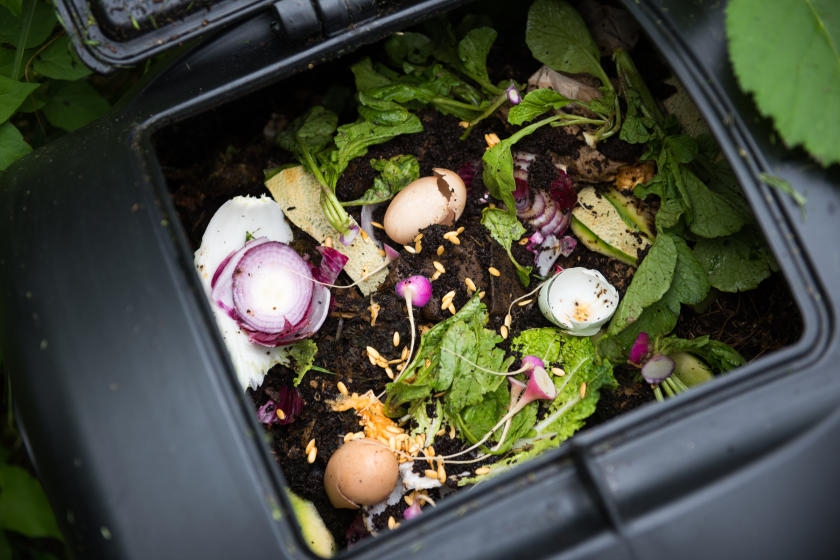If you’re looking to get your hands dirty with organic gardening and landscaping, look no further than using compost. Compost is good for your plants, the environment and your pocketbook because it reduces waste and prevents plant disease while decreasing the need for chemical fertilizers. Here are some ways to use compost to foster healthy, organic growth in both your lawn and garden.
Make Compost
Composting is fairly simple to do as long as you regularly collect the materials needed for it and routinely maintain it. You also need something to collect your compost in. You can either purchase a compost bin or build your own compost bin.
To make compost, collect household waste. Compost is generally made up of two types of waste: “green” and “brown.” Green waste is material such as grass clippings, vegetable and fruit scraps, eggshells, coffee grounds and plant trimmings. These key components provide nitrogen, which is part of the chemical process of creating compost. You will also need brown waste, such as dry leaves, finely chopped wood and bark chips, shredded newspaper or straw. The brown waste provides carbon, another essential element for creating compost. To ensure an even composition, alternate layers of green and brown materials. Ideally, you should have much more carbon than nitrogen in your compost; the perfect ratio being 30:1.
Helpful Tip
Do not add animal waste, meats, oils, dairy, diseased plants, weeds that have gone to seed, or plants treated with pesticides or herbicides to your compost.
Break up materials before layering to make organic materials heat up rapidly, decompose quickly and produce uniform compost.
To prevent odor and other unpleasant side effects when composting, be sure to turn the compost with a pitchfork or shovel to move material from the edges to the inside, allowing necessary aeration. Make sure the compost stays damp, but not soaked. It should be as moist as a wrung-out sponge. If the material is too dry, add water. Keep track of its temperature as well. If it is warm or hot, everything is working properly. If it is similar to the outdoor temperature, you’ll need to add more nitrogen or green materials to the mix.
You’ll know your compost is ready for use when it is no longer hot, and you can’t identify any of the materials of which it is composed. It should have a dark brown, moist and earthy consistency and smell. It will take up to two to three months to fully process, if you consistently maintain it.
Ways to Use Compost
Use Compost in Your Garden and Planters
Compost can be used in your garden or in indoor potted plants as a soil amendment/fertilizer. You simply mix the compost with garden or potting soil. Aim for a 3:1 mixture of soil and compost for optimal growing. In your garden, use a tiller to break up the soil, mixing in compost as you do so. When working with potted plants, follow a similar process—fill your pots or planters with 1/3 compost and 2/3 organic potting soil.
You can also add a top layer of compost to your established garden beds and potted plants. This is called top dressing. Water carries nutrients from this compost layer down into the soil, acting as sort of a natural, time-released fertilizer. Simply sprinkle the compost across the entirety of your beds or a small amount on top of the soil in your potted plants and let rain or regular watering do its magic.
Use Compost on Your Lawn
Top dressing compost on your lawn works the same way as it does with garden beds and in planters. Adding one to three inches of compost on top of your grass fosters healthy lawn growth. Simply spread it across your yard and rake it in as much as possible. Afterwards, water the grass thoroughly using a garden hose or sprinkler. Eventually, the compost will settle in, filling the soil with beneficial nutrients and microorganisms and even help the soil retain moisture longer for a vibrant green yard.
Use Compost as Mulch
Use compost as mulch around garden plants, flowers and trees. Spread it around the base of plants. The compost will work like other mulches by retaining water and will decompose over time to provide needed nutrients and microorganisms into the soil around the plants’ root systems.
Well done! Now you can effectively use compost to make your lawn and garden green and bountiful.
Project Shopping List
Here’s what you’ll need to complete this project successfully.













